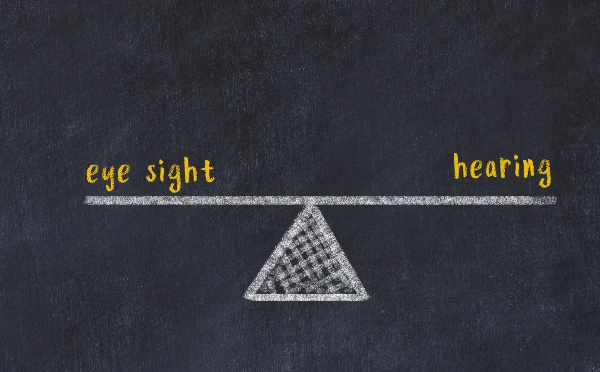
 This article presents practice tips from Community Care Inform Adults’ guide on working with adults who are deafblind. The full guide gives an awareness and understanding of the complexities of deafblindness, and the social care law and policy that relates to deafblind people. It also provides guidance on the areas to pay particular attention to during an assessment. Inform Adults subscribers can access the full content here.
This article presents practice tips from Community Care Inform Adults’ guide on working with adults who are deafblind. The full guide gives an awareness and understanding of the complexities of deafblindness, and the social care law and policy that relates to deafblind people. It also provides guidance on the areas to pay particular attention to during an assessment. Inform Adults subscribers can access the full content here.
The guide is written by Beryl Palmer, a registered social worker with over 20 years’ experience working in local authority sensory and autism services.
Deafblindness is not simply hearing impairment and visual impairment added together. It is synergistic, in that one impairment multiplies the effect of the other, giving rise to a unique disability. It is this compounding effect that causes difficulties for people even though, taken separately, visual and hearing impairments may be relatively mild.
Deafblindness may also be referred to as dual sensory loss, dual sensory impairment, or multi-sensory impairment. Many deafblind people do not use the term ‘deafblind’ themselves. The language people choose to describe themselves varies and is influenced by factors such as the age of onset and how they self-identified before experiencing the loss of a second sense.
Deafblindness affects people of all ages but is most prevalent in older adults because of the impact of ageing on sight and hearing.
Communication methods
Deafblind people use a range of communication methods, which will be influenced by various factors including, but not limited to, age of onset, cause and severity of their deafblindness. These communication methods include:
- Clear speech: where every word, sentence and idea is spoken clearly and simply.
- Lipreading: commonly used by those with acquired deafblindness who have sufficient residual vision.
- Fingerspelling: the representation of letters using hand movements. Block alphabet and deafblind manual alphabet are both examples of fingerspelling.
- Braille: a system used by some visually impaired and deafblind people, where raised dots represent letters and numbers and these are identified through touch.
- British Sign Language (BSL): a language which has its own word order and grammar. It makes use of space and movement of the hands, face, head, and body.
- Haptic communication: comprises tactile signs which describe visual information in the person’s environment, including emotional information. It augments the primary method of communication.
Other methods include Tadoma (tactile lipreading), Moon (a system using raised shapes), and Makaton (a system which combines signs and symbols).
Deafblind people should be encouraged to diversify the ways they communicate because this increases the likelihood that they will be able to effectively communicate in any given interaction. And as people often experience deterioration in their senses, proactively using and practising a new method can prepare them for this adjustment.
Tips for communicating with a deafblind person
- In some cases it may be helpful and appropriate to talk in advance to someone who knows the person well, such as a family member or carer, to learn about the best way of communicating with them.
- Consider the environment:
– ensure there is good lighting but that it’s not shining in their face.
– minimise background noise – close doors and windows if necessary.
– consider using a room with carpeting which can absorb noise and facilitate hearing. - Approach them from the front, in their line of vision.
- Gain their attention before you start to communicate, through a gentle touch on their arm.
- Introduce yourself and say their name.
- Establish the best position for you to be in to communicate – this may be quite close to them, on one side or in a specific chair in their home.
- Speak clearly and a little slower, but maintain a normal rhythm.
- Always keep your face visible and use facial expressions.
- Repeat and rephrase sentences.
- Be very clear when you are changing the subject.
- Use a black pen to write in large print (taking a small whiteboard with you may be useful).
- Allow time for the person to process information.
- Check that they have understood.
- Take equipment with you such as an assistive listening device or make use of other assistive technology.
- If clear speech does not work, try using block alphabet.
- Let them know what is seen and taking place in the room.
- Recognise how tiring communicating can be for them and allow time for breaks.
- Be patient and, once again, allow time.
In-person communication is generally recommended, especially for assessment, but if you need to make a video call, refer to Deafblind UK’s guidance on making video calls as accessible as possible.
Who can support adults who are deafblind with communication?
There are several different professionals who can support deafblind people with communication depending on their individual language and communication requirements.
- Interpreters translate speech into BSL or deafblind manual. They may adapt BSL using hands-on or visual frame. The number of registered interpreters for deafblind people (RIDBs) is very low – check the National Registers of Communication Professionals working with Deaf and Deafblind People (NRCPD).
- Speech-to-text reporters, also called palantypists or stenographers, reproduce verbatim text onto a screen for the person to read. The font size and colours can be adjusted to meet individual needs.
- Electronic note takers convert speech to live text producing a summary of spoken dialogue on a screen.
- Lipspeakers are people with hearing who are trained to be easy to lipread. They reproduce the shapes, rhythm and stress of a speaker’s words without using their own voice (though they may use their voice if they are asked to do so and this can enable the lipreader to benefit from residual hearing). They may also add gestures, facial expressions and fingerspelling.
Note that guide communicators, who are trained to provide one-to-one support for deafblind people, including communication support, cannot be used for critical service interventions as they are not suitably qualified or insured for this purpose.
Remember that the time required to communicate with a deafblind person means that it is likely to take significantly longer to carry out an assessment. It is also likely to take more than one session.
If you have a Community Care Inform Adults licence, log in to access the full guide. There, you can read more on care and support plans and reviews, and safeguarding.






 Family help: one local authority’s experience of the model
Family help: one local authority’s experience of the model  ‘I spent the first three months listening’: how supportive leadership can transform children’s services
‘I spent the first three months listening’: how supportive leadership can transform children’s services  How senior leaders in one authority maintain a culture of excellence
How senior leaders in one authority maintain a culture of excellence  How staff support ensures fantastic outcomes for children and families
How staff support ensures fantastic outcomes for children and families  Workforce Insights – showcasing a selection of the sector’s top recruiters
Workforce Insights – showcasing a selection of the sector’s top recruiters 

 Facebook
Facebook X
X LinkedIn
LinkedIn Instagram
Instagram
Comments are closed.